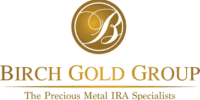Gold remains one of the most trusted investments during uncertain economic times. Whether you’re new to precious metals or looking to expand your portfolio, buying gold requires careful planning and knowledge to make smart decisions. The key to successful gold investing is understanding your options, choosing reputable dealers, and selecting the right type of gold for your financial goals.
In this post, we share several tips for buying gold that are relevant in 2025.

Many investors turn to gold as a way to protect their wealth from inflation and market volatility. You have several choices when investing in gold, from physical coins and bars to gold funds and mining stocks. Each option comes with different benefits, costs, and storage requirements.
This guide will walk you through everything you need to know about buying gold in 2025. You’ll learn about different investment types, how to buy physical gold safely, and strategies for building a solid gold investment plan while avoiding common mistakes and high fees.
Understanding Gold as an Investment

Gold offers unique benefits as a store of value and portfolio diversifier. Economic uncertainty in 2025, inflation concerns, and various market factors make gold worth considering for your investment strategy.
Why Buy Gold in 2025
The current economic climate presents several reasons to consider gold. Interest rates remain volatile, and many investors worry about currency stability.
Gold provides portfolio diversification beyond traditional stocks and bonds. When financial markets decline, gold often maintains or increases its value.
Physical gold gives you direct ownership of a tangible asset. Unlike stocks or bonds, you can hold gold coins or bars in your hands.
Key benefits include:
- Protection during market downturns
- No counterparty risk
- Global recognition and liquidity
- Long history as a store of wealth
Central banks worldwide continue buying gold reserves. This institutional demand supports gold prices over time.
You can start with small amounts. Fractional gold coins or small bars let you begin investing without large upfront costs.
Gold as a Hedge Against Inflation
Gold typically holds its value when currency loses purchasing power. As prices for goods and services rise, gold prices often increase too.
Historical data shows gold performing well during high inflation periods. In the 1970s, when inflation reached double digits, gold prices soared.
Inflation protection works because:
- Gold supply grows slowly compared to paper money printing
- Demand increases when people lose confidence in currency
- Physical assets tend to maintain real value over time
Current inflation concerns make this protection valuable. Government spending and money supply expansion worry many investors.
Gold doesn’t pay dividends or interest. However, it can preserve your purchasing power when inflation erodes cash savings.
You should view gold as insurance rather than a growth investment. It protects wealth rather than dramatically increasing it.
Factors Influencing Gold Prices
Multiple economic forces affect gold price movements. Understanding these helps you make better buying decisions.
Major price drivers include:
- Dollar strength – Weaker dollars typically mean higher gold prices
- Interest rates – Lower rates make gold more attractive than bonds
- Economic uncertainty – Crises drive investors toward gold
- Supply and demand – Mining output and jewelry demand affect prices
Central bank policies significantly impact gold prices. When banks cut interest rates or increase money supply, gold often rises.
Geopolitical events create sudden price spikes. Wars, elections, and trade disputes can drive investors to safe-haven assets.
Industrial demand also matters. Electronics and medical devices use gold, creating steady demand beyond investment purposes.
Seasonal patterns exist too. Jewelry demand peaks during wedding seasons and holidays in major markets like India and China.
Watch these indicators to time your purchases better. However, remember that timing the market perfectly is nearly impossible.
Types of Gold Investments – Top Tips for Buying Gold

Gold investors have four main options: buying physical gold like coins and bars, investing in gold ETFs and funds that track gold prices, purchasing stocks in gold mining companies, or trading gold futures contracts.
Physical Gold Options
Physical gold includes coins, bars, and rounds that you can hold directly. Gold coins come from government mints and include American Eagles, Canadian Maple Leafs, and South African Krugerrands.
Gold bars range from small 1-gram pieces to large 400-ounce bars. Most investors buy bars between 1 ounce and 100 ounces.
Benefits of Physical Gold:
- Direct ownership
- No counterparty risk
- Hedge against currency problems
Drawbacks:
- Storage and insurance costs
- Lower liquidity than paper gold
- Higher premiums over spot price
You need secure storage like a safe deposit box or home vault. Insurance protects against theft or loss. Physical gold works best for long-term wealth protection.
Gold ETFs and Funds
Gold ETFs trade on stock exchanges like regular stocks but track gold prices. The SPDR Gold Trust (GLD) is the largest gold ETF with billions in assets.
Gold ETFs hold physical gold in vaults. When you buy shares, you own a portion of that gold. You can buy and sell during market hours through any brokerage account.
Popular Gold ETFs:
- SPDR Gold Trust (GLD)
- iShares Gold Trust (IAU)
- Aberdeen Standard Physical Gold Shares ETF (SGOL)
Gold funds include mutual funds that invest in gold-related assets. Some focus only on physical gold while others mix gold stocks and bullion.
ETFs offer easy access to gold investing without storage hassles. Fees typically range from 0.25% to 0.4% per year. This option suits investors who want gold exposure in retirement accounts.
Gold Stocks and Mining Companies
Gold mining stocks give you exposure to gold through companies that extract it from the ground. Stock prices often move more than gold prices in both directions.
Types of Gold Stocks:
- Large miners like Newmont and Barrick Gold
- Small exploration companies
- Streaming and royalty companies
Mining companies face operational risks like equipment failures, labor strikes, and regulatory changes. However, they can profit more when gold prices rise because their costs stay fixed.
Gold mining stocks pay dividends unlike physical gold. They also trade easily during market hours. Your returns depend on both gold prices and company performance.
Research company financials, mining costs, and reserves before investing. Diversify across multiple companies to reduce single-stock risk.
Gold Futures and Derivatives
Gold futures are contracts to buy or sell gold at set prices on future dates. These trade on exchanges like COMEX with standardized contract sizes of 100 troy ounces.
Futures require margin deposits, not full payment upfront. This creates leverage that amplifies both gains and losses. Professional traders and institutions use futures most often.
Key Features:
- High liquidity during trading hours
- Lower transaction costs than physical gold
- No storage requirements
- Settlement in cash or physical delivery
Gold options give you the right but not obligation to buy or sell gold futures. You pay a premium for this flexibility.
These derivatives suit experienced traders who understand leverage risks. Most individual investors should avoid futures unless they have significant trading knowledge and risk capital.
Buying Physical Gold Safely

Finding trustworthy dealers and understanding different gold products are essential steps for safe purchases. Knowing how to spot quality dealers and evaluate gold products will protect your investment.
Selecting Reputable Gold Dealers
Choose established precious metals dealers with proper licensing and credentials. Look for businesses that are members of the Professional Numismatists Guild or have Better Business Bureau accreditation.
Verify dealer legitimacy by checking their physical address and business registration. Reputable gold dealers provide transparent pricing and detailed product information.
Read customer reviews on independent platforms like Trustpilot and the Better Business Bureau. Pay attention to how dealers handle complaints and shipping issues.
Avoid pawn shops and unlicensed sellers for investment purchases. These sources often lack proper authentication and may charge excessive markups.
Check for secure websites with HTTPS encryption when buying online. Legitimate dealers offer insured shipping and clear return policies.
Get multiple quotes from different dealers before making large purchases. Price differences can be significant between dealers.
Evaluating Gold Bullion and Coins
Verify purity levels before purchasing any gold products. Investment-grade gold bars should contain at least 99.5% pure gold.
Request authenticity certificates and proper documentation for all purchases. These papers prove your gold’s legitimacy and help with future sales.
Examine gold coins carefully for signs of counterfeiting. Popular investment coins like American Gold Eagles and Canadian Maple Leafs have specific security features.
Understand purity measurements for different products. Gold coins may have lower purity than bars due to added metals for durability.
Buy from authorized dealers listed in the U.S. Mint’s dealer directory when purchasing government-issued coins. This reduces counterfeit risks significantly.
Test authenticity using professional testing services if you have concerns about a purchase.
Gold Bars Versus Gold Coins
Gold bars offer lower premiums over spot price compared to coins. They provide the most cost-effective way to buy physical gold by weight.
Choose bars for pure investment purposes when you want maximum gold content for your money. Larger bars typically have lower premiums per ounce.
Select gold coins for flexibility and easier resale options. Coins are more liquid and easier to sell in smaller amounts.
Consider collectible value with coins that may appreciate beyond their gold content. Popular coins like Krugerrands have established markets worldwide.
Storage requirements differ between bars and coins. Bars need less space but coins offer more flexibility for partial sales.
Government backing makes coins more recognizable to buyers. This recognition can make future sales easier and faster.
Gold Investment Strategies
Smart gold investing requires careful planning and the right approach for your financial goals. Most experts recommend allocating 5-15% of your portfolio to gold, while considering both immediate liquidity needs and long-term wealth protection.
Diversifying With Gold
Gold serves as a hedge against economic uncertainty and inflation. It moves differently than stocks and bonds, which helps balance your portfolio during market downturns.
Physical gold offers the most direct exposure. You can buy coins like American Eagles or Canadian Maple Leafs. Gold bars provide lower premiums for larger purchases.
Gold ETFs give you exposure without storage concerns. Popular options include SPDR Gold Shares (GLD) and iShares Gold Trust (IAU). These trade like stocks but track gold prices.
Gold mining stocks add another layer. Companies like Newmont and Barrick Gold can outperform gold itself during bull markets. However, they carry additional business risks.
Allocation by Investment Type:
- Physical gold: 40-60%
- Gold ETFs: 30-40%
- Mining stocks: 10-20%
This mix balances security with growth potential while maintaining reasonable liquidity across your gold investments.
Long-Term Versus Short-Term Approaches
Long-term gold investing works best as insurance against currency debasement and economic instability. Gold has preserved purchasing power over decades, rising over 5,000% since the 1970s.
Buy physical gold with money you won’t need for at least five years. Store it outside the banking system in secure facilities. Switzerland, Singapore, and Liechtenstein offer strong property rights protection.
Short-term trading requires different tools. Gold futures and ETFs provide better liquidity for quick moves. However, gold’s daily price swings make timing difficult.
Paper gold products work for short-term plays but carry counterparty risk. The seller might not deliver physical metal when everyone wants it.
Focus on dollar-cost averaging for long-term positions. Buy small amounts regularly instead of timing the market. This smooths out price volatility over time.
Portfolio Allocation Recommendations
Most financial advisors suggest 5-15% allocation to gold for balanced portfolios. Conservative investors might choose 5-10%, while those expecting economic troubles could go up to 25%.
Your allocation depends on several factors:
Age and Risk Tolerance:
- Under 40: 5-10%
- 40-60: 10-15%
- Over 60: 10-20%
Economic Conditions:
- Stable markets: 5-10%
- High inflation: 10-20%
- Currency crisis: 15-25%
Rebalance annually or when gold exceeds your target by more than 5%. Sell some gold when it outperforms to buy undervalued assets.
Keep 3-6 months of gold allocation in highly liquid forms like ETFs. Store the rest in physical metal for maximum security.
Never use borrowed money for gold purchases. Only invest savings you can afford to hold for years without touching.
Recognizing Risks and Costs
Buying gold involves several hidden expenses and risks that can impact your investment returns. Gold prices fluctuate, and various fees can reduce your profits significantly.
Premiums and Fees
Gold purchases come with premiums above the current market gold price. These premiums vary by product type and dealer.
Physical gold coins typically carry premiums of 3-8% over spot price. Gold bars usually have lower premiums of 1-3%. Rare or collectible coins can have much higher markups.
Transaction costs include:
- Dealer commissions
- Fabrication fees
- Shipping charges
- Credit card processing fees
Gold ETFs and stocks have different fee structures. You pay broker commissions when buying and selling. ETFs charge annual expense ratios that range from 0.25% to 0.60%.
These costs add up quickly with frequent trading. Compare prices from multiple dealers before buying. Look for reputable sellers with transparent pricing.
Storage and Security Solutions
Physical gold requires secure storage, which creates ongoing expenses. You have several storage options with different cost structures.
Home storage seems free but creates security risks. You need a quality safe and insurance coverage. Homeowners insurance may not cover large gold holdings.
Professional storage options:
- Bank safety deposit boxes: $50-300 annually
- Private vault services: 0.5-1.5% of gold value yearly
- Allocated storage: Higher fees but individual ownership
- Unallocated storage: Lower costs but pooled ownership
Insurance adds another expense layer. Professional storage facilities often include insurance in their fees. Self-storage requires separate precious metals insurance policies.
Storage costs compound over time. A $50,000 gold investment might cost $500-750 annually for secure storage and insurance.
Liquidity and Selling Challenges
Gold’s liquidity varies significantly by form and market conditions. Understanding selling challenges helps you plan better exit strategies.
Physical gold can be harder to sell quickly. You need to find buyers willing to pay fair prices. Coin shops and dealers often offer below-market rates when purchasing from investors.
Liquidity factors:
- Popular coins sell faster than rare pieces
- Gold bars require verification and testing
- Large quantities may need multiple buyers
- Weekend and holiday sales are limited
Gold ETFs and stocks offer better liquidity during market hours. You can sell shares instantly through your broker. However, share prices may not perfectly track gold prices.
Selling timing affects your returns. Gold prices change throughout each trading day. You might need to sell during unfavorable price periods due to personal financial needs.
Tax implications also impact your net proceeds. Gold sales may trigger capital gains taxes depending on holding periods and profit amounts.
Choosing Trusted Platforms and Providers
Finding reliable places to buy gold requires checking dealer credentials, comparing fees, and understanding different investment options. The best platforms offer secure transactions, competitive pricing, and strong customer protection policies.
Top Gold Dealers in 2025
American Hartford Gold stands out for its educational approach and customer service. They offer gold coins, bars, and IRA services with transparent pricing. The company has strong ratings from the Better Business Bureau.
Goldco specializes in precious metals IRAs and direct purchases. They provide free educational materials and have experienced representatives to guide new investors. Their buyback guarantee offers peace of mind for future sales.
APMEX remains a top choice with over 20 years in business. They offer:
- Wide selection of gold products
- Real-time pricing updates
- Secure shipping with full insurance
- Competitive buyback program
JM Bullion provides straightforward pricing with clear premiums over spot prices. They offer free shipping on all orders and a price match guarantee.
Look for dealers with these key features:
- BBB accreditation
- Industry association memberships
- Transparent pricing
- Secure payment options
- Customer reviews and testimonials
Best Gold ETFs to Consider
Gold ETFs let you invest in gold without storing physical metal. SPDR Gold Trust (GLD) is the largest gold ETF with low fees and high liquidity. It tracks gold prices closely and trades like a stock.
iShares Gold Trust (IAU) offers similar exposure with slightly lower expense ratios. Both ETFs are backed by physical gold stored in secure vaults.
VanEck Vectors Gold Miners ETF (GDX) invests in gold mining companies instead of physical gold. This option provides exposure to gold prices but adds company-specific risks.
Benefits of gold ETFs include:
- No storage costs
- Easy buying and selling
- Lower minimum investment
- Professional management
Consider your investment goals when choosing between physical gold exposure or mining company stocks.
Setting Up a Gold IRA
A Gold IRA lets you hold physical gold in a tax-advantaged retirement account. You need an IRA custodian that allows precious metals and an approved depository for storage.
Goldco and American Hartford Gold both offer Gold IRA services with experienced teams to handle the setup process. They help with:
- Account transfers from existing IRAs
- IRS-approved gold selection
- Secure storage arrangements
- Annual reporting requirements
Gold IRAs have specific rules. Only certain gold coins and bars meet IRS purity standards. Popular approved options include American Gold Eagles and Canadian Gold Maple Leafs.
Setup typically takes 2-3 weeks. You’ll pay custodian fees, storage fees, and possible setup costs. Compare these fees across providers since they vary significantly.
The IRS requires all Gold IRA metals to be stored in approved depositories. You cannot store them at home while maintaining the tax benefits.
Frequently Asked Questions
New investors often wonder about starting amounts, choosing between physical gold and ETFs, and timing their purchases. These common questions address budget constraints, key investment factors, and practical considerations like jewelry purchases and ETF mechanics.
What are the key factors to consider when investing in gold for the first time?
You should start by understanding gold purity, which is measured in karats. Investment-grade gold typically comes in 22K or 24K purity levels.
Research reputable dealers who have certifications from organizations like the Professional Numismatists Guild or American Numismatic Association. Check customer reviews before making any purchases.
Consider storage costs and insurance needs. Home storage requires a quality safe and additional insurance coverage. Professional vault storage comes with annual fees but offers better security.
Factor in premiums above the spot price. Different dealers charge different premiums, so compare rates before buying.
Verify authenticity through certifications from trusted institutions like the London Bullion Market Association. Always ask for documentation when purchasing gold.
How can beginners invest in gold with a limited budget?
Start with fractional gold coins or small gold bars. These allow you to enter the market without large initial investments.
Consider gold ETFs if you want exposure to gold prices without owning physical metal. ETFs require lower minimum investments than physical gold.
Look for reputable online dealers that offer competitive premiums on smaller purchases. Some dealers offer better rates for first-time buyers.
Set a manageable budget for your first purchase. This helps you learn the market without overcommitting financially.
Scale your investments gradually as you gain experience and confidence in the gold market.
What are the advantages and disadvantages of buying physical gold versus gold ETFs?
Physical gold gives you tangible ownership of your investment. You can hold coins or bars in your hand and store them yourself.
Physical gold requires secure storage and insurance costs. You need a quality safe or professional vault storage, which adds to your expenses.
Gold ETFs offer convenience and liquidity without storage concerns. You can buy and sell ETF shares easily through your brokerage account.
ETFs track gold prices but don’t give you actual gold ownership. You own shares in a fund that holds gold, not the metal itself.
Physical gold works better for long-term holding strategies. ETFs suit investors who want to trade gold positions more frequently.
What should potential buyers be aware of before purchasing gold jewelry?
Gold jewelry typically contains alloys for durability. Most jewelry is 14K or 18K gold, not the pure 24K gold used for investment.
Jewelry carries higher premiums than investment gold. You pay for craftsmanship, design, and retail markups beyond the gold content.
Resale values for jewelry are lower than investment-grade gold. Dealers typically pay less for jewelry because of the lower gold content and style considerations.
Check the karat marking and ask for certificates of authenticity. Reputable jewelers provide documentation of gold content and purity.
Consider jewelry as personal enjoyment rather than investment. Investment-grade coins and bars offer better value for wealth preservation.
How do gold ETFs work, and what are the steps to purchase them?
Gold ETFs are funds that track the price of gold and trade on stock exchanges like regular stocks. The funds hold physical gold or gold-related securities.
Choose a reputable brokerage account to buy ETF shares. Look for brokers with low fees and good customer service records.
Research different gold ETFs to find one that matches your needs. Some ETFs track spot gold prices while others focus on gold mining companies.
Place your order through your brokerage platform during market hours. You can use market orders for immediate purchases or limit orders for specific prices.
Monitor your ETF holdings through your brokerage account. ETF prices change throughout trading hours based on gold market movements.
How does the current gold price impact the strategy for investing in gold?
Higher gold prices mean you get less gold for your money. Consider dollar-cost averaging to spread purchases over time during high-price periods.
Watch economic indicators like inflation rates and currency fluctuations. Gold often performs well during high inflation periods and economic uncertainty.
Monitor central bank buying and selling patterns. Large institutional purchases can drive prices higher, while selling can depress prices.
Consider market timing based on historical trends. Gold prices often move opposite to stock market performance during economic stress.
Set price alerts to track favorable buying opportunities. This helps you purchase gold when prices dip below your target levels.



